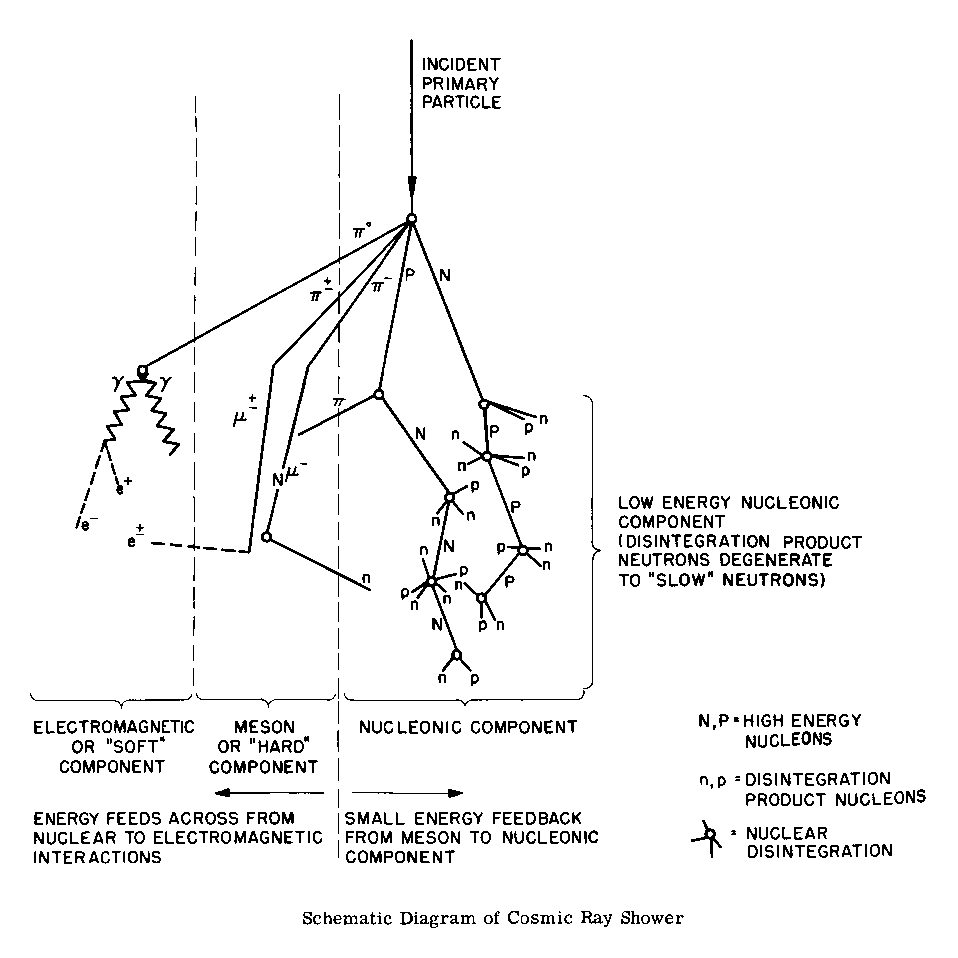
COSMIC RAYS
ORIGIN AND PROPAGATION
INTRODUCTION: -
Cosmic rays are extremely penetrating radiations coming from outer space. More than a century has passed since their discovery yet there is little known about their origin and propagation. Their discovery goes to C.T.R. Wilson in 1900 when he observed, that his electroscope discharges in spite of providing careful insulation. He inferred that there are some penetrating radiation coming from terrestrial source that discharges it.
Victor Hess thought that if these were terrestrial then, as we would go up this discharging would significantly decrease. He took his electroscope in a balloon and to his surprise he found that in fact discharging increased very rapidly as he went up. He then suggested that there is some extraterrestrial radiation bombarding on the Earth from all sides. Millikans also investigated Hess's suggestion and called this radiation as COSMIC RAYS. Since then, the rays are called cosmic rays.
After that a lot of research started on this subject. Scientists from various institutions and universities conducted various experiments to gain knowledge about their origin, properties, etc.
Any theory on such radiation should be able to answer the following
questions: -
At present science is reasonably close to the answer of 3rd and
4th questions. But about first two, the speculations continue.
FEATURES OF COSMIC RAYS: -
Once on his voyage from Holland to Java a Dutch physicist Clay carried with him an instrument and measured cosmic rays intensities as the ship sailed across the ocean. To his surprise he found that cosmic rays intensity was significantly lower around the equator. From his experimental data he asserted that these charged particles are significantly affected by Earth's Magnetic Field. Later on, Stomers and others gave the details of motion of charged particle in atmosphere. From these theories, East-West asymmetry of cosmic rays came into light.
To verify these assertions, Compton suggested for the world survey of Cosmic Rays' intensity. Due to our geographical location and the presence of magnificent Himalayas, India is a very important place for this survey.
Later on, many balloon flights were accomplished from various parts of the world for their observations and India again contributed significantly to data.
Homi Bhabha worked out many theoretical mysteries about the cosmic rays gave his famous Bhabha-Hietler Theory on Generation of Cosmic Rays.
Here is how shower proceeds after entering in to atmosphere.

WHAT ARE COSMIC RAYS?
The nuclei of hydrogen (the proton) make up about 90 percent of cosmic rays. The remaining 10 percent are made up of the nuclei of heavier elements such as helium (two neutrons and two protons). Unlike most particles, cosmic rays have extremely high energies and travel at extremely high speeds through space, nearly at the speed of light.
Cosmic rays do not get far into the atmosphere before they collide with nitrogen or oxygen molecules in the air. The collision destroys the cosmic ray particle and the air molecule, and then several new particles emerge. Cosmic rays from space are termed "primary," and any particles created in the atmosphere from collisions are termed "secondary." A bit of energy is transferred to each new secondary particle. Secondary cosmic rays spread out and continue to hit other particles and air molecules, creating a
Cascade of particles showering towards the ground.
THE SOURCE OF COSMIC RAYS: -
Most cosmic rays are protons, which are abundant in the universe. How protons obtain the energy required to become cosmic rays is still a mystery.
Supernova explosions are one source of galactic cosmic rays. In a matter of seconds, the core of an old star collapses, releases a large amount of energy and particles into space, and becomes a supernova remnant. Supernova remnants are identified in space by a nebula (cloud) of gas, which remains in the region of the explosion. Solar flares are a source of solar cosmic rays. Solar flares are strong eruptions from the sunís surface, which expel solar particles into space.
COSMIC RAYS IN OUR LIVES: -
Cosmic rays effect various aspects of our life, some of them are as follows: -
Computers
Computer companies must take cosmic rays into consideration when designing
computers. As components become smaller and more powerful, strikes from high-energy cosmic ray particles can do more damage. One result of a cosmic ray strike is called a "single event upset," which occurs when a computer memory cell is hit. This can change the basic units of memory which are made up of patterns of 1 and 0.Computers must be designed to run constant checks to correct for any changes made, such as a 1 suddenly changed to a 0.
Astronomy research
Satellites and spacecraft are exposed to very high levels of cosmic radiation. Computer equipment and people in space must be highly protected from cosmic rays. A scheduled space walk or even a rocket launch may be delayed during periods of intense cosmic radiation.
The most persistent problem for astronomers who point cameras into space is cosmic rays. Cosmic rays hitting the cameras leave a lot of streaks and pots in the photographs. When taking a picture of an object in space, a long exposure is preferable to capture the most light. However astronomers are limited to about one hour because too many cosmic ray streaks cloud the picture.
Communication
Apart from this it also can cause havoc of health and can disturb radio communication.
References: -